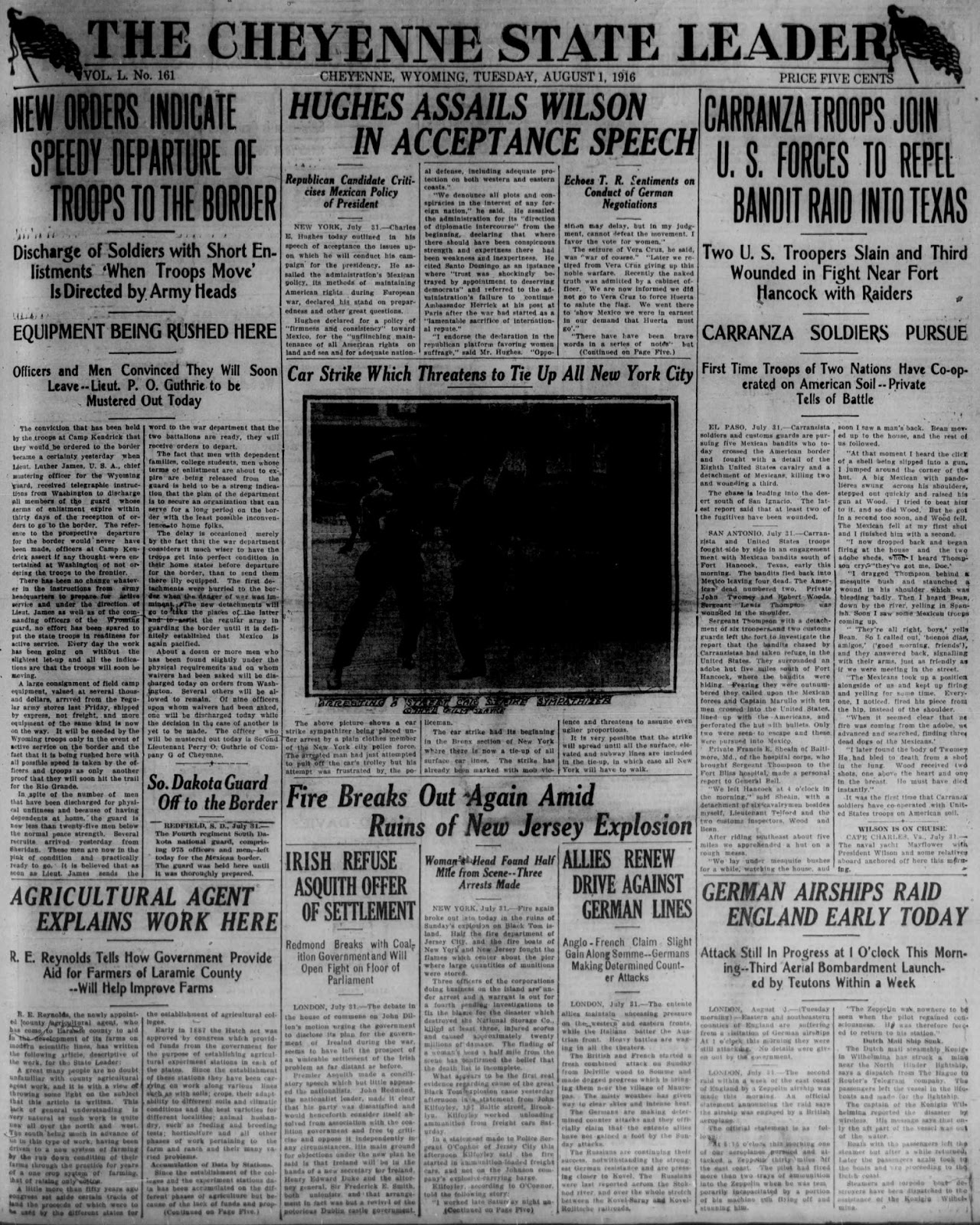1867 Cheyenne's first municipal election. On the same day, in the same town, the post office at the corner of Ferguson (Carey Avenue) and Seventeenth streets opened. Attribution: On This Day.
1886 Cavalry arrived at Yellowstone to police the park.
1896 William H. Harrison born in Terra Haute, Indiana. He was Wyoming's Congressman from 1951 to 1956, from 1961 to 1965 and 1967 to 1969. The Indiana born lawyer had been in Indiana's legislature in the 1920s, before moving to Wyoming where he first entered politics by being a Representative to the state legislature from Sheridan County. He came from a family with long political roots, with his great-great-great grandfather Benjamin Harrison V being a signer of the United States Declaration of Independence, his great-great grandfather William Henry Harrison being the 9th U.S. President and his grandfather Benjamin Harrison being the 23rd U.S. President. In his retirement he relocated to Florida.
1912 Congress appropriated $45,000 for the purchase of lands and maintenance of a winter elk refuge in Jackson Hole where ranchers, and then the State, had been undertaking feeding the elk during winter. Attribution: On This Day.
1916 The Cheyenne State Leader for August 10, 1916. One battalion to be ordered to the border.
One battalion of the Wyoming National Guard looked to be deployed. The Guard was nearly one soldier short, however, due to an elopement, one of quite a few that these papers reported on.
And, the World War One homesteading boom was really on.
1916 The local weather, August 10, 1916
Lander, WY
High of 69.1°F and low of 28.9°F.
Cheyenne, WY
High of 73°F and low of 51.1°F
Sheridan, WY
High of 75°F and low of 48°F.
Nice temperatures during the day,and in Lander and Sheridan, cool temperatures at night.
1917 The Food and Fuel Control Act of 1917 (Lever Act) becomes law






1918 Huns Retreat. Lonely Hearts at D. A. Russell. Doggerel in the Oil Patch. The news of August 10, 1918.
All the news fit to print, and then some.
On this Saturday morning in sunny Wyoming, 1918, readers around the state were reading of the huge change in fortunes for the Allies, who were now advancing rapidly towards the German frontier. But other news crowded and shoved onto the front pages of the state's various newspapers as well.
In Casper, Casperites were greeted with the news that the local Home Guard was going to complete the issuance of rifles.
At Cheyenne's Ft. D. A. Russell readers learned that a lonely soldier was seeking a girl measuring 5 to 5.5 feet who was not a drunkard. The publishing suitor noted that he measured 5 feet 4.5 inches high and had well to do parents, and was seeking a Cheyenne girl to marry.
A less chivalrous character in Virginia testified at trial that he wouldn't serve in the war even if the Turks landed on our shores and carried our women off to bondage. My goodness.
In grimmer news, a medical officer who was formerly stationed at Ft. D. A. Russell was found dead in San Antonio, shot in the head.
Wyoming Oil World, a newspaper rather obviously dedicated to the petroleum industry, found itself moved to verse on this day in 1918, although not very good verse. The subject was the dread Powder River, Let'r Buck war cry of Wyomingites.
1919 August 10, 1919. The Motor Transport Convoy rests in Laramie.
The weather was "fair and cool", which would be a good description of most summer days in high altitude Laramie, which has some of the nicest summer weather in Wyoming. Wind and rain in the late afternoon is a typical feature of the summer weather there.
1950 The Plymouth Oiler baseball team from Sinton, Texas played the Worland, Wyoming, Indians in the first no-hit, no-run game in National Baseball Congress history. Attribution: On This Day.
1954 The Can-A-Pop beverage company of Sheridan announced it was moving to Denver.
1956 A contract was signed for the construction of the first uranium processing mill in Wyoming. Attribution: Wyoming State Historical Society.
1988 President Ronald Reagan signed a bill providing reparations Japanese-Americans interred by the U.S. government during World War II. One of the interment camps was at Hart Mountain, Wyoming, which is near Cody.

















































.jpg)


